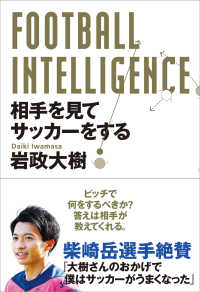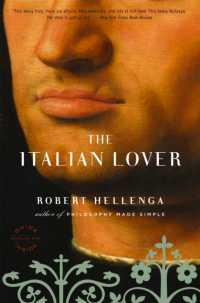- ホーム
- > 洋書
- > 英文書
- > Religion / Ethics
Full Description
Revised and updated edition of bestselling History of the Liturgy provides an accessible, panoramic survey of the origins and development of the liturgical life in the Catholic church.
How great the differences between the Last Supper celebrated by Jesus and a papal Mass at St. Peter's in Rome, between the early baptism by immersion described in the Acts of the Apostles and the baptisms of newborns in our parishes. Why such changes in the celebration of the Christian mystery? Why the post-conciliar reforms, often misunderstood? In this revised edition of the bestselling History of the Liturgy, Marcel Metzger answers such questions and offers an understanding of this evolution through a carefully documented historical survey.
The essential forms of the liturgy were fixed very early according to the tradition received from the apostles. But the place given to biblical readings, preaching, singing, and ritual has varied over the centuries. Churches adapted the form of the celebration to pastoral needs, the conditions of different communities, and different cultural contexts. Metzger describes the most important phases of these changes. In the first millennium, he focuses on liturgy's essentials common to the Eastern and Western churches. For the second millennium, he explains the ritual and theological deviations of the Western churches, the response of the Council of Trent to the Reformation, the liturgical movement of the nineteenth and twentieth centuries, and the reform and renewal of Vatican II.
This comprehensive survey of the history of liturgy is designed to offer readers a solid yet introductory look into the realities that have made and still make up the church's liturgical life including assemblies, Eucharist, baptism, reconciliation, daily praise, the church's calendar, and its architecture. This revised edition includes new material on the earliest available accounts of Christian liturgical practices, the development of ritual books, and the cultural forces that shaped liturgical practice and theology over the centuries; new English translations of important ancient texts; and a new chapter on the liturgical movement and the reforms of Vatican II that it prompted.
Contents
Contents
Foreword ix
Introduction 1
CHAPTER ONE
The Historical Study of the Liturgy 9
The Oral Tradition 11
Ancient Witnesses of the Liturgical Tradition 12
Archeological Vestiges 14
Written Sources 15
The Method Followed for This Historical Study 16
CHAPTER TWO
Apostolic Times: The First Century 20
The Sources 21
The Places Used for the Assemblies 22
The Assemblies, or Synaxes 23 Community Meals 25
The Last Supper, Source of the Eucharist 27
The First Christian Eucharists 28
The Accounts of Baptisms 34
The Liturgy in Time 38
Liturgical Ministries 41
The Rites of the Apostolic Church 42
CHAPTER THREE
Liturgy in the Christian Diaspora of the Second and Third Centuries 43
The Sources 45
The Assemblies 48
The Places Used for the Assemblies 50
The Eucharistic Celebration 53
The Synaxes on Weekdays 60
The Liturgy of Baptism 62
Ministries and Ordinations 71
The Reconciliation of Penitents 74
Liturgies for the Martyrs and the Dead 78
The Paschal Feast 79
The Oil of the Sick 82
Marriage 82
Conclusion 83
CHAPTER FOUR
The Liturgy in the Roman Empire after the Peace of the Church 85
The Sources 88
The Assemblies 94
The Basilicas 99
The Eucharistic Celebration 104
The Synaxes on Weekdays 120
The Baptismal Liturgy 123
Ministries and Ordinations 132
Marriage, a Family Ritual 137
The Reconciliation of Penitents 138
The Oil of the Sick 143
Liturgies for Martyrs and the Dead 144
Feasts and Calendars 146
Conclusion: A Golden Age for the Liturgy 149
CHAPTER FIVE
The Remaking of the West by the Franks and Its Implications for the Roman Liturgy 151
The Carolingian Renaissance and Its Effects 152
The Importation of Roman Liturgical Books 153
Evolution of the Books of the Roman Liturgy 157
Stabilization of the Liturgy in the Roman Church 159
CHAPTER SIX
The Latin Liturgy in the Second Millennium 161
The Religious Context 163
Evolution of the Roman Church into a Clerical Society 166
The Arrangement of Church Building s 173
The Instrumentalization of the Sacraments 176
Liturgical Practices during the Second Millennium 182
The Funeral Rites 188
The Calendar and Feasts 189
From the Celebration to the Administration of the Sacraments 189
The Expansion of Devotions 190
CHAPTER SEVEN
The Liturgical Movement of the Nineteenth and Twentieth Centuries and the Liturgical Reform of Vatican II 195
Dom Guéranger and the Influence of Solesmes 195
The Stages of Liturgical Reform 197
The Constitution on the Liturgy (Sacrosanctum Concilium) 200
Conclusion 205
Glossary 209
Index 213








